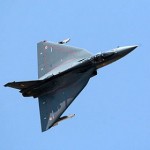The government of Prime Minister Narendra Modi has pro-actively pursued India’s agenda of modernising and indigenising its defence sector by clearing several long-pending demands of the Indian military for equipment.
India’s rapidly-obsolescing military hardware has made this push imperative—the ageing of the hardware has been prominently highlighted by a string of naval accidents in the last two years and the rapidly depleting strength of the air force squadron, with the de-induction of old aircraft and delays in inducting replacements.
Externally, raging border disputes with China and Pakistan, and the growing presence of the Chinese Navy in the Indian Ocean region, continue to be threats that call for an updating of the Indian defence sector.
Summary
- Upgrading the country’s military capabilities has become critical for India, in the context of the persistent border disputes with Pakistan and China, and the Chinese Navy’s growing profile in the Indian Ocean region.
- The NDA government has acted expeditiously, clearing various long-pending demands of the Indian military for new weapons.
- Defence spending and investment will continue to increase as India fast-tracks its military modernisation; India is expected to spend more than $130 billion in the next decade on buying new weapons.
- Defence is included in the Modi government’s ‘Make in India’ plans—with the objective of promoting domestic defence production and increasing the participation of private companies in big ticket production of submarines, helicopters, and aircraft.
- Foreign investment is critical: FDI in defence has been raised to 49% from the earlier cap of 26%. The focus will be on bringing capital and high technology to the industry.
- For immediate operational needs, imports will be necessary as evidenced by the outright purchase of Rafael aircraft from France in April 2015.
- But by 2020, India’s component of arms imports—currently 60%—should be reduced to 30%, and India must shed its title of the world’s largest arms importer.
- Policy changes are critical:
- India needs a ‘Defence White Paper’ and the 2005 Kelkar Committee report on defence was the closest to being such a paper. It is a good time to make the report public—update it to a White Paper and implement its recommendations.
- Implement with rigour the Defence Procurement Procedure (DPP) 2013, which prioritises Indian equipment or equipment produced in India, over imported equipment.
- The Ministry of Defence, in consultation with the private and public sector, must:
- Bring certainty to the defence procurement process and combat corruption by amending the DPP;
- Define national technological priorities to leverage the private sector for meeting “jointness” in militaries (coordination between the armed forces) and for “network-centric warfare” capabilities;
- Focus on private-sector led defence research and development (R&D), as is the trend worldwide;
- Utilise the offsets arrangements smartly to enhance India’s technological base.
You can download the PDF version of this Policy Perspective, here.
Sameer Patil is Associate Fellow, National Security, Ethnic Conflict and Terrorism, at Gateway House
This policy perspective was exclusively created for Gateway House: Indian Council on Global Relations. You can read more exclusive content here.
For interview requests with the author, or for permission to republish, please contact outreach@gatewayhouse.in.
© Copyright 2015 Gateway House: Indian Council on Global Relations. All rights reserved. Any unauthorized copying or reproduction is strictly prohibited


